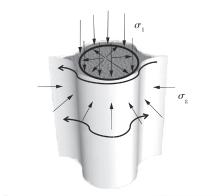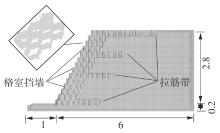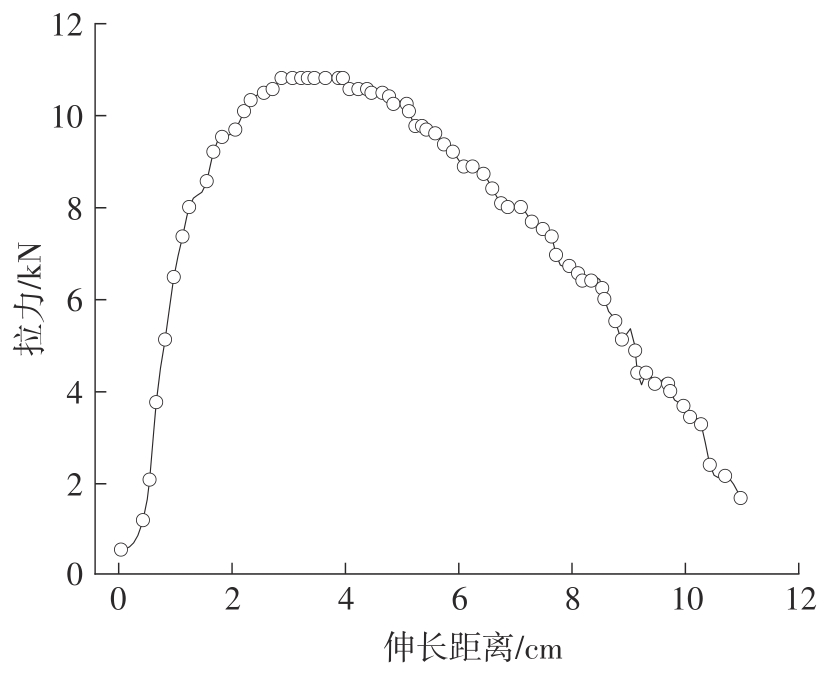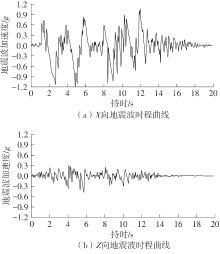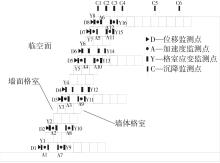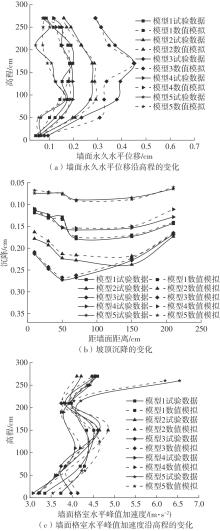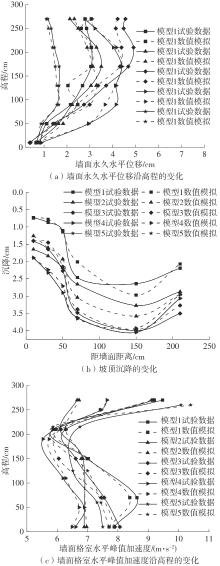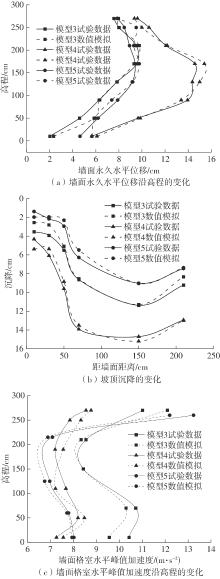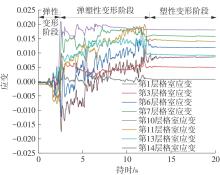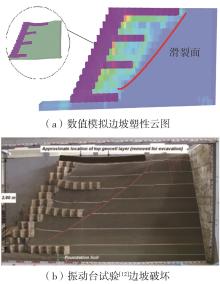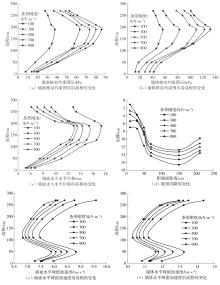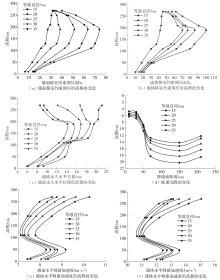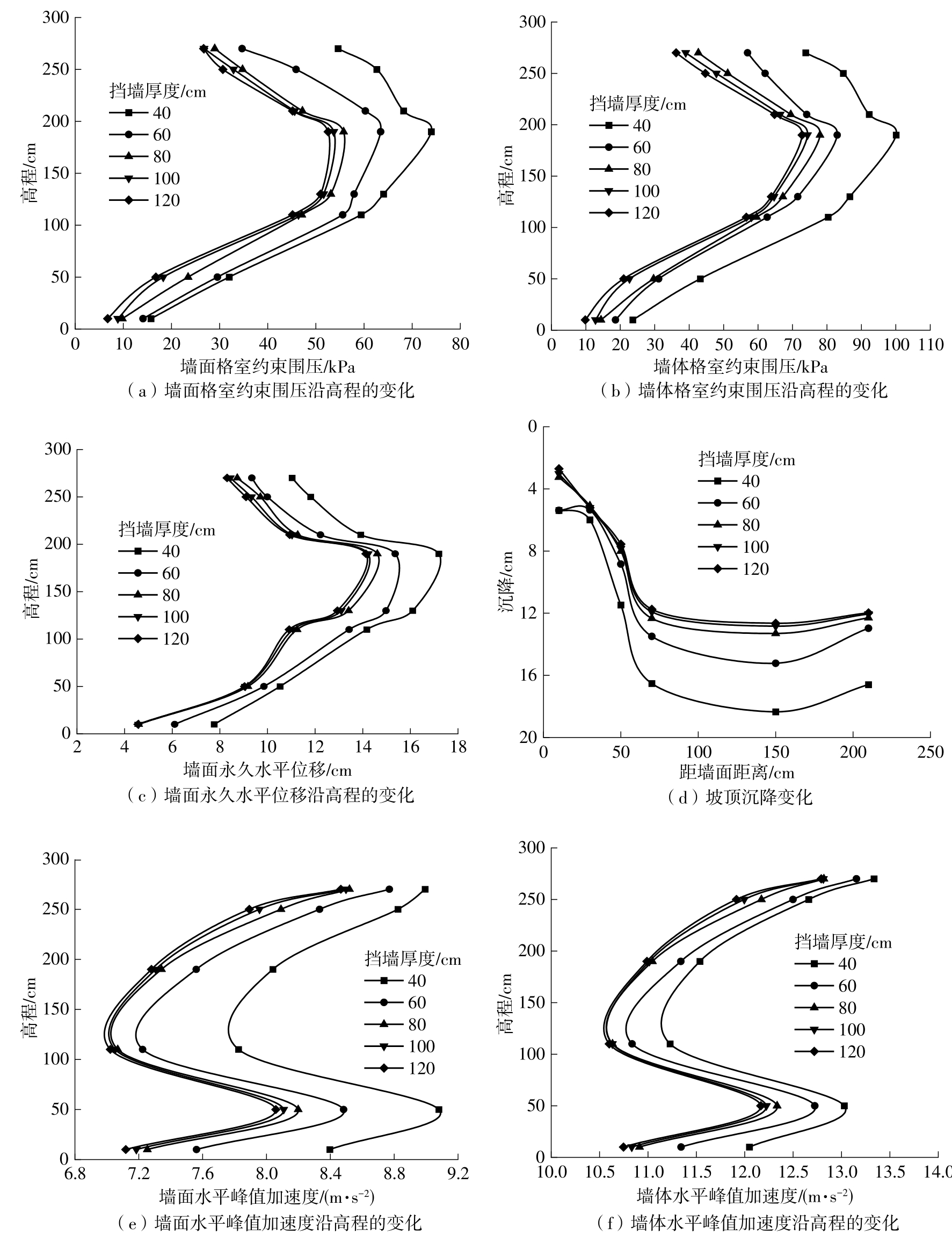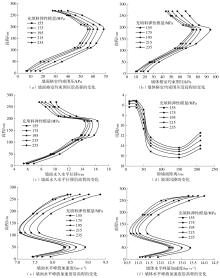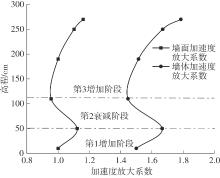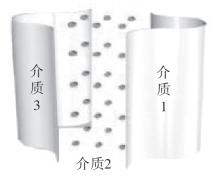Journal of South China University of Technology(Natural Science Edition) ›› 2024, Vol. 52 ›› Issue (7): 145-160.doi: 10.12141/j.issn.1000-565X.230412
Special Issue: 2024年土木建筑工程
• Architecture & Civil Engineering • Previous Articles
Influence Factors of Mechanical Properties of Geocell Retaining Wall Under Seismic Load
JIN Feifei1,2(), SONG Fei1,2(), SHI Lei1,2, ZHU Jie1,2
- 1.School of Highway Engineering,Chang’an University,Xi’an 710064,Shaanxi,China
2.The Key Laboratory of lntelligent Construction and Maintenance of CAAC,Chang’an University,Xi’an 710064,Shaanxi,China
CLC Number:
Cite this article
JIN Feifei, SONG Fei, SHI Lei, et al. Influence Factors of Mechanical Properties of Geocell Retaining Wall Under Seismic Load[J]. Journal of South China University of Technology(Natural Science Edition), 2024, 52(7): 145-160.
share this article
| 1 | 赵飞,俞松波,李博,等 .地震作用下岩质边坡大型振动台试验研究进展[J].地球学报,2022,47(12):4498-4512. |
| ZHAO Fei, YU Songbo, LI Bo,et al .Research advances on large-scale shaking table test for rock slopes under earthquake[J].Earth Science,2022,47(12):4498-4512. | |
| 2 | LIN P, LIU X L, HU S Y,et al .Large deformation analysis of a high steep slope relating to the Laxiwa Reservoir,China[J].Rock Mechanics and Rock Engineering,2016,49(6):2253-2276. |
| 3 | CHEN R H, CHIU Y M .Model tests of geocell retaining structures[J].Geotextiles and Geomembranes,2008,26(1):56-70. |
| 4 | SONG F, XIE Y L, YANG Y F,et al .Analysis of failure of flexible geocell-reinforced retaining walls in the centrifuge[J].Geosynthetics International,2014,21(6):342-351. |
| 5 | 宋飞,谢永利,杨晓华,等 .填土面作用荷载时土工格室柔性挡墙破坏模式研究[J].岩土工程学报,2013,35(s1):152-155. |
| SONG Fei, XIE Yong-li, YANG Xiao-hua,et al .Failure mode of geocell flexible retaining wall with surcharge acting on backfill surface[J].Chinese Journal of Geotechnical Engineering,2013,35(s1):152-155. | |
| 6 | SONG F, LIU H B, MA L Q,et al .Numerical analysis of geocell-reinforced retaining wall failure modes[J].Geotextiles and Geomembranes,2018,46(3):284-296. |
| 7 | NARIMAN K, GHAZAVI M .Static stability analysis of geocell-reinforced slopes[J].Geotextiles and Geomembranes,2021,49(3):852-863. |
| 8 | XIE Y L, YANG X H .Characteristics of a new-type geocell flexible retaining wall[J].Journal of Materials in Civil Engineering,2009,21(4):171-175. |
| 9 | CHEN R H, WU C P, HUANG F C,et al .Numerical analysis of geocell-reinforced retaining structures[J].Geotextiles and Geomembranes,2013,39(8):51-62. |
| 10 | 屈战辉,谢永利,袁福发,等 .土工格室柔性挡墙极限主动土压力计算方法[J].交通运输工程学报,2010,10(1):24-28,35. |
| QU Zhan-hui, XIE Yong-li, YUAN Fu-fa,et al .Calculation method of active earth pressure under limitstate for geocell flexible retaining wall[J].Journal of Traffic and Transportation Engineering,2010,10(1):24-28,35. | |
| 11 | WANG J P .Large-scale shaking table tests of reinforced soil retaining walls with geocell facing[D].New York:Columbia University,2007. |
| 12 | LING H I,DOV L, WANG J P,et al .Seismic response of geocell retaining walls:experimental studies[J].Journal of Geotechnical and Geoenvironmental Engineering,2009,135(4):515-524. |
| 13 | SONG F, LIU H B, YANG B,et al .Large-scale triaxial compression tests of geocell-reinforced sand[J].Geosynthetics International,2019,26(4):388-395. |
| 14 | 蔡晓光,徐洪路,李思汉,等 .地震作用下返包式加筋土挡墙数值模拟[J].吉林大学学报(地球科学版),2021,51(5):1416-1426. |
| CAI Xiaoguang, XU Honglu, LI Sihan,et al .Numerical simulation of reinforced soil retaining wall with wrapped face under seismic effects[J].Journal of Jilin University (Earth Science Edition),2021,51(5):1416-1426. | |
| 15 | 蒋建清,杨果林 .格宾加筋土挡墙抗震性能及数值分析[J].土木工程学报,2012,45(1):100-108. |
| JIANG Jianqing, YANG Guolin .Numerical analysis of seismic behaviour of gabion-reinforced soil retaining wall[J].China Civil Engineering Journal,2012,45(1):100-108. | |
| 16 | LIU H B, YANG G Q, LING H I .Seismic response of multi-tiered reinforced soil retaining walls[J].Soil Dynamics and Earthquake Engineering,2014,43(61/62):1-12. |
| 17 | UIJAWAL K N, VENKATESWARLU H, HEGDE A .Vibration isolation using 3D cellular confinement system:a numerical investigation[J].Soil Dynamics and Earthquake Engineering,2019,119(4):220-234. |
| 18 | 左政,杨广庆,王贺,等 .土工格室规格对加筋土剪切性能的影响[J].岩土工程学报,2022,44(6):1053-1060. |
| ZUO Zheng, YANG Guang-qing, WANG He,et al .Effects of geocell size on shear behavior of reinforced soil[J].Chinese Journal of Geotechnical Engineering,2022,44(6):1053-1060. | |
| 19 | 王涛,韩煊,赵先宇,等 .FLAC 3D数值模拟方法及工程应用[M].北京:中国建筑工业出版社,2015. |
| 20 | 宋丹青,黄进,刘晓丽 .地震作用下层状岩质边坡动力响应[J].湖南大学学报(自然科学版),2021,48(5):113-120. |
| SONG Danqing, HUANG Jin, LIU Xiaoli .Dynamic response of layered rock slopes under earthquakes[J].Journal of Hunan University(Natural Sciences),2021,48(5):113-120. | |
| 21 | 言志信,郭斌,段建 .黄土边坡地震动力响应探讨[C]∥第三届全国工程安全与防护学术会议论文集.武汉:中国岩石力学与工程学会,2012:373-378. |
| 22 | 曾新吾,韩开锋 .弹性波动力学基础[M].长沙:国防科技大学出版社,2012. |
| 23 | 张祖武,姚令侃 .土岩界面地震波能量传递与耗散特性研究——以汶川8.0级地震为例[J].灾害学,2011,26(1):5-9. |
| ZHANG Zuwu, YAO Lingkan .Seismic waves scattering in rock interface and energy dissipation characteristics-taking M8.0 Wenchuan Earthquake as an example[J].Journal of Catastrophology,2011,26(1):5-9. | |
| 24 | 李昀,杨果林,林宇亮 .水平地震作用下加筋格宾挡土墙动力特性试验研究[J].岩土工程学报,2009,31(12):1930-1935. |
| LI Yun, YANG Guo-lin, LIN Yu-liang .Dynamic characteristics of reinforced gabion walls subjected to horizontal seismic loading[J].Chinese Journal of Geotechnical Engineering,2009,31(12):1930-1935. | |
| 25 | 张江伟,李小军,齐剑峰,等 .地震动参数对土坡地震响应的影响权重研究[J].振动与冲击,2018,37(6):225-230. |
| ZHANG Jiangwei, LI Xiaojun, QI Jianfeng,et al .Effect of influence weights of ground motion parameters on soil slope seismic responses[J].Journal of Vibration and Shock,2018,37(6):225-230. |
| [1] | LING Yuhong, HUANG Qianyi, ZHOU Jing, et al. Experimental Study on Failure Mechanism of RC Frame Structures Based on Performance Design Method [J]. Journal of South China University of Technology(Natural Science Edition), 2024, 52(11): 9-20. |
| [2] | JIANG Dongqi, WU Hao, FAN Jin. Study on Whole-Process Mechanical Behavior of Novel Spread Slab Beam Bridges [J]. Journal of South China University of Technology(Natural Science Edition), 2024, 52(1): 38-51. |
| [3] | LI Peizhen, XIAO Jiaqu, YANG Jinping, et al.. Dynamic Response of Frame Structure System Considering SSI Effect [J]. Journal of South China University of Technology(Natural Science Edition), 2023, 51(9): 139-148. |
| [4] | ZHANG Ruoyu, LI Yaolong, LI Yan, et al. Study on the Effect of Mooring Form on the Dynamic Response of Floating Offshore Wind Turbine [J]. Journal of South China University of Technology(Natural Science Edition), 2023, 51(8): 80-88. |
| [5] | XIAO Ye LUO Xiaoyong. Impact of Increasing Load of Heavy Haul Train on Structural Response of Simply Supported T-shape Beam Bridge [J]. Journal of South China University of Technology (Natural Science Edition), 2020, 48(9): 124-132. |
| [6] |
ZHANG Xiaoqing GAO Huafeng ZHANG Run ZHU Xiaolong HE Min LIU Xiaoming.
Simulation Analysis of Dynamic Response on Fuselage of Carrier-Based Aircraft Arresting Landing
|
| [7] | WEI Wen-hui HUANG Wei-song XUE Guang-wen ZHANG Di. Seismic Response of High-Flexible Structure Under Multi-component Ground Motion [J]. Journal of South China University of Technology (Natural Science Edition), 2017, 45(8): 103-109. |
| [8] | ZANG Meng-yan MENG Ning CHU Shu-min CHEN Yong . Dynamic Response Analysis of a Transmission Housing Under Variable Speed Conditions [J]. Journal of South China University of Technology (Natural Science Edition), 2017, 45(8): 1-6. |
| [9] | ZHANG Xiao-qing DING Tie LONG Shu-chang YAO Xiao-hu. Dynamic response and Damage Prediction of Composite Stiffened Panel Under Hail Impact [J]. Journal of South China University of Technology (Natural Science Edition), 2017, 45(5): 120-128. |
| [10] | SUN Guang-yong ZHANG Jing-tao LI Shi-qiang LI Guang-yao . Dynamic Response Analysis of Hierarchical Aluminum Honeycomb Sandwich Structure Subjected to Explosive Load [J]. Journal of South China University of Technology (Natural Science Edition), 2017, 45(5): 141-146. |
| [11] | DAI Gong-lian LIU Xiang-yu LIU Wen-shuo. Experimental Research on Dynamic Properties of CRTSⅡ Ballastless Track on Simply-Supported Beam [J]. Journal of South China University of Technology (Natural Science Edition), 2017, 45(4): 95-102. |
| [12] | ZHANG Hong DENG Han-guo YAO Xiao-hu LONG Qian. Analysis of Dynamic Responses of Curved Laminated Glass Panels Under Blast Loads [J]. Journal of South China University of Technology (Natural Science Edition), 2016, 44(4): 135-142. |
| [13] | WEI De-min LIU De-yuan LI Di. Nonlinear Response of Reinforced Concrete Frame Structures Under Symmetrical Impact [J]. Journal of South China University of Technology (Natural Science Edition), 2016, 44(2): 8-13. |
| [14] | HE Yan-bin YAO Xiao-hu CHENG Shi-chao LONG Shu-chang ZHANG Xiao-qing. Experimental Investigation into Dynamic Response of Composite Foam Sandwich Plates Under Low-Energy Impact [J]. Journal of South China University of Technology (Natural Science Edition), 2016, 44(10): 57-64,80. |
| [15] | He Zhao-xia Chang Le-hao Liu Lan . Dynamic Response Analysis of Planetary Gear Transmission System Coupled with Gearbox Vibrations [J]. Journal of South China University of Technology (Natural Science Edition), 2015, 43(9): 128-134,148. |
| Viewed | ||||||
|
Full text |
|
|||||
|
Abstract |
|
|||||
